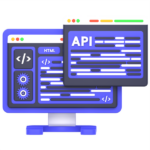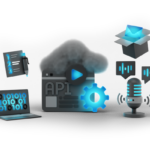Approach to Data Querying
Organizations are constantly seeking ways to streamline and optimize their tech stacks. The growth of data, the demand for real-time access, and the need for scalability have all made traditional RESTful APIs increasingly insufficient for enterprises. This is where GraphQ, a query language for APIs emerges as a game-changer, especially in the context of Enterprise Architecture (EA). But what makes GraphQL such a compelling choice for enterprises, and how does it fit into the larger framework of EA?
What is GraphQL?
GraphQL is a query language that enables clients to request exactly the data they need, and nothing more. Unlike RESTful APIs, where each endpoint returns a fixed structure of data, GraphQL allows clients to ask for specific fields from multiple resources in a single query.
GraphQL deals with complex data models and distributed systems, which makes it a vital component of contemporary Enterprise Architecture. By utilizing GraphQL, enterprise teams can enhance their API ecosystem, leading to better performance and an improved user experience.
GraphQL’s Role in Enterprise Architecture
At the core of Enterprise Architecture, its goal is to align technology with business goals, guaranteeing that IT systems function effectively while also driving the organization’s overall success. In the realm of data architecture, GraphQL integrates perfectly into this framework. and distributed systems, which makes it a vital component of contemporary Enterprise Architecture. By utilizing GraphQL, enterprise teams can enhance their API ecosystem, leading to better performance and an improved user experience.
How GraphQL enhances enterprise systems
1. Simplified Data Access Across Multiple Services
In a typical enterprise environment, various systems—whether it’s CRM, ERP, databases, or legacy software—generate data that needs to be accessed and consumed by different departments and applications. Traditional REST APIs, while functional, can require multiple requests to various endpoints to gather the necessary information, often leading to over-fetching or under-fetching of data.
With GraphQL, this problem is alleviated. By using a single query, enterprise applications can gather data from multiple sources in one round trip. This reduces latency and improves the efficiency of microservices communication. Moreover, the data returned is exactly what is needed, which can be critical in high-performance systems.
2. Improved Flexibility and Customization for Diverse Teams
Enterprises often rely on different teams with varying technical needs—backend developers, frontend developers, data scientists, and business analysts all need tailored access to different pieces of the system.
GraphQL offers developers the ability to customize data access based on specific use cases. Instead of modifying the backend to create new endpoints or to cater to custom queries, teams can leverage GraphQL schemas to enable flexible querying that suits their needs. This results in improved collaboration between teams and allows for better decision-making through data democratization.
3. Better API Management and Evolution
In the enterprise world, managing and scaling APIs can become increasingly difficult as the number of endpoints grows. New features are added, legacy systems are maintained, and at times, business units need specific data not available via current API endpoints.
GraphQL allows enterprises to build a single, version-less API layer on top of their existing systems. By defining a schema, the organization’s data can evolve without breaking existing functionalities, offering both backward compatibility and future-proofing. This flexibility aligns with the agile nature of modern enterprise environments, where rapid innovation is essential.
4. Optimization and Monitoring
Given the scale of data involved in enterprise systems, performance optimization is critical. GraphQL provides built-in tools to monitor and trace queries, helping teams identify inefficiencies. Whether it’s ensuring queries don’t return more data than necessary or leveraging batching and caching techniques, GraphQL integrates smoothly with performance monitoring tools, enabling enterprises to stay ahead of potential bottlenecks.
Furthermore, using real-time data in enterprise architectures—such as through WebSockets or subscriptions—further boosts the value of GraphQL for building applications that require continuous data updates.
5. Security in a Complex Data Landscape
In the age of cloud computing, SaaS products, and microservices, securing enterprise data has never been more important. With traditional REST APIs, securing access to data can become a challenge when there are numerous endpoints to manage.
GraphQL allows enterprises to implement more granular authorization and authentication controls. Each field in the schema can have specific access rules, meaning that sensitive data is only exposed when appropriate. In combination with other enterprise security standards, this granular access control allows for compliance with regulations like GDPR and HIPAA while maintaining performance.
6. Decoupling Frontend and Backend Development
One of the most significant benefits of GraphQL in an enterprise context is the ability to decouple frontend and backend development. In large-scale organizations with multiple frontend applications (mobile apps, web apps, admin panels), managing APIs can become cumbersome, especially if the backend team is constantly making changes to accommodate new frontend requirements.
GraphQL provides a unified API layer, enabling frontend teams to query exactly what they need without waiting for backend developers to create new endpoints. This decoupling speeds up development cycles, encourages autonomy, and fosters more efficient workflows across teams.
Some companies that have successfully integrated GraphQL into their enterprise architectures includes :
- GitHub
- Spotify
- Shopify
They highlight the versatility of GraphQL in business settings, illustrating how it enables organizations to manage intricate data processes, enhance collaboration, and ultimately increase productivity.
Conclusion
As businesses continue to navigate the complexities of data scalability, performance, and flexibility, integrating GraphQL into Enterprise Architecture can offer a significant edge. By centralizing data queries, minimizing duplicate requests, and providing precise data access, GraphQL empowers organizations to operate with greater agility, security, and efficiency.
Implementing GraphQL within your enterprise architecture not only enhances operational efficiency but also paves the way for the next generation of enterprise solutions—ones that are adaptable, scalable, and prepared for the future. Whether you’re developing a microservices architecture or managing intricate data lakes, GraphQL’s robust querying capabilities will form a foundational element in delivering improved user experiences and business results.



